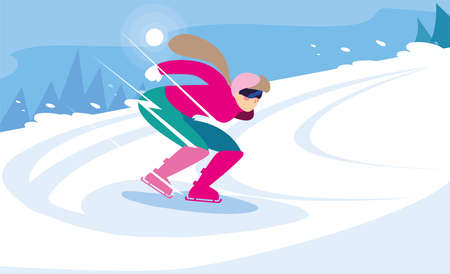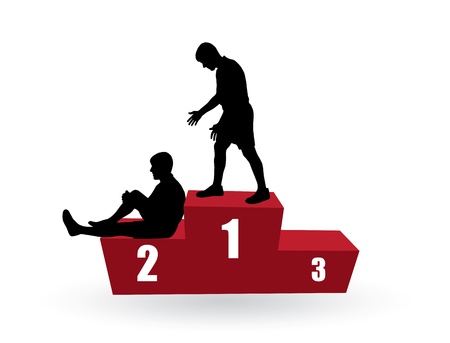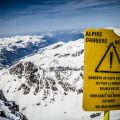1. Understanding Heat-Related Illnesses
When you’re out on the trail, especially in the American backcountry, staying safe means more than just watching your step—it’s also about knowing how to handle the heat. Every summer, hikers across the U.S. face risks from high temperatures, which can quickly lead to dangerous health issues if you’re not prepared. The most common heat-related illnesses that hikers may encounter are heat exhaustion and heat stroke. Here’s what you need to know:
Common Heat-Related Illnesses for Hikers
| Illness | Main Symptoms | What Happens |
|---|---|---|
| Heat Exhaustion | Heavy sweating, weakness, dizziness, nausea, headache, cool/clammy skin | Your body loses too much water and salt through sweat; it can’t keep itself cool enough. |
| Heat Stroke | No sweating, hot/dry/red skin, confusion, rapid pulse, fainting | This is a medical emergency—your body’s cooling system fails and core temperature rises dangerously high. |
Why Outdoor Activities in the U.S. Wilderness Increase Risks
- Remote Locations: Trails in national parks or wilderness areas can be far from help if something goes wrong.
- High Temperatures: Many popular American trails pass through deserts or open spaces where shade is limited and daytime temps soar.
- Physical Exertion: Hiking with a heavy pack or climbing uphill makes your body work harder, raising your risk of overheating.
- Lack of Water Sources: Some backcountry routes have few reliable water sources, making dehydration a real concern.
- Cultural Factors: In the U.S., “pushing through” discomfort is common—but ignoring early warning signs can be dangerous on the trail.
Key Takeaway for Hikers
If you’re hiking anywhere in the States—from the Appalachian Trail to the deserts of Arizona—knowing how to spot and react to heat-related illnesses can make all the difference. Understanding these basics will help keep you and your hiking buddies safe while exploring America’s wild places.
2. Identifying Early Warning Signs
How to Spot Heat-Related Illnesses on the Trail
When youre out hiking in the American backcountry, spotting early signs of heat-related illnesses can make a huge difference. Its not just about being uncomfortable—missing these signals can turn a fun day hike into a dangerous situation fast. Here’s how to recognize those first warning signs and what they look like when you’re on the trail.
Common Early Symptoms
| Symptom | What It Looks Like on the Trail | What to Do |
|---|---|---|
| Fatigue | Unusual tiredness, slowing pace, needing more breaks than usual | Rest in the shade, hydrate, lighten your load if possible |
| Dizziness | Feeling lightheaded, unsteady on your feet, trouble focusing on the path | Sit down safely, drink water, cool off with a wet bandana or hat |
| Confusion | Forgetting directions, trouble making decisions, odd behavior | Stop moving, get help from a buddy, rehydrate slowly |
| Heavy Sweating | Sweat-soaked clothes even when resting, sweat beads on face and arms | Take off your pack for a break, sip water frequently, find shade or breeze |
| Muscle Cramps | Painful tightening in legs or arms after steady hiking or climbing hills | Gently stretch cramped muscles, drink an electrolyte beverage or eat salty snacks if you have them |
Trail-Specific Tips for Spotting Symptoms Early
- Buddy Check: Hike with a partner and check in every hour—sometimes others notice changes before you do.
- Pace Yourself: If your group is slowing down more than expected, it could be an early sign that someone isn’t feeling right.
- Sweat Watch: In dry climates like Arizona or Utah, sweat evaporates quickly. If your skin feels dry but it’s hot out, that’s a red flag for dehydration and heat illness.
- Mood Shifts: If someone gets irritable or unusually quiet, ask how theyre feeling—confusion and mood swings are subtle but serious warning signs.
- Listen to Your Body: Ignore “tough it out” thinking—if you start feeling any of these symptoms, take them seriously and act right away.
If You Notice These Signs…
The key is acting early. Take breaks more often, get out of direct sun whenever possible (even if it means crouching under a tree or boulder), drink fluids regularly—even if you’re not thirsty—and don’t hesitate to turn back if symptoms don’t improve. Recognizing these signs quickly keeps everyone safer and makes sure the adventure stays fun.

3. Immediate On-Trail First Aid
Step-by-Step Actions for Heat Illness Emergencies
When you or a hiking buddy show signs of heat-related illness, acting fast can make all the difference. Here’s a simple guide to help you manage the situation safely and effectively while on the trail.
Quick First Aid Steps for Heat-Related Illness
| Step | Action | Details & Tips |
|---|---|---|
| 1 | Move to Shade | Find a shady spot under trees or use a tarp or emergency blanket for shade. |
| 2 | Stop Activity | Sit or lie down. Dont keep hiking or exerting yourself—rest is crucial. |
| 3 | Hydrate Safely | Sip cool water slowly. Avoid chugging. If available, add electrolytes (like sports drink powder or rehydration tabs). |
| 4 | Cool the Body | Drape wet bandanas or shirts on skin, fan them, and place cold packs (or water bottles) in armpits, groin, and neck if possible. |
| 5 | Loosen Clothing | Remove hats, loosen belts, open up collars and sleeves for better airflow. |
| 6 | Monitor Symptoms | Watch for confusion, vomiting, fainting, or stopped sweating—these are red flags. |
| 7 | Call for Help if Needed | If symptoms are severe (confusion, unconsciousness, vomiting), call 911 with your GPS location or use a satellite communicator. Don’t hesitate to seek professional help. |
| 8 | Prepare for Evacuation | If necessary, get ready to move the person with help from others, but only if it’s safe to do so. |
Backcountry Best Practices to Remember
- Buddies Save Lives: Always hike with a partner and keep an eye out for each other’s health.
- Pace Yourself: Take frequent breaks in the shade and listen to your body—don’t push through warning signs.
- Campsite Choices: Set up rest stops in shaded areas during hot afternoons.
- Sunscreen & Hats Matter: Protect skin from sunburn which can worsen heat stress.
- No Alcohol: Skip beer or liquor—alcohol increases dehydration risk in the heat.
- If in Doubt, Call Out: Use a whistle or personal locator beacon if you need urgent rescue and have no cell signal.
- Keep Calm: Stay calm and reassure the affected person—panic can make things worse for everyone involved.
The key is to act early when someone starts feeling off in hot weather. Simple steps like getting out of direct sun and sipping water can prevent serious problems before they start. If you’re not sure what to do, always err on the side of caution and reach out for help using whatever resources you have available on the trail.
4. Prevention Strategies for Hikers
Stay Hydrated: The Foundation of Heat Illness Prevention
Hydration is your best defense against heat-related illnesses. According to the American Hiking Society and the National Park Service, you should drink water regularly while hiking—don’t wait until you feel thirsty. A general guideline is to drink about half a liter (16-17 ounces) of water per hour during moderate activity in moderate temperatures. In hotter weather or at higher altitudes, you may need even more.
| Weather Condition | Recommended Water Intake |
|---|---|
| Mild/Cool | 0.5 liters/hour (16-17 oz) |
| Hot/Sunny | 0.7-1 liters/hour (24-34 oz) |
| High Altitude | 0.7-1 liters/hour (24-34 oz) |
Add Electrolytes
If youre hiking for several hours or sweating a lot, consider electrolyte drinks or snacks with sodium and potassium. This helps replace salts lost through sweat and keeps your body balanced.
Dress Smart: Clothing Choices Matter
The right clothing can keep you cool and protect you from sunburn. U.S. outdoor guidelines recommend:
- Light-colored, loose-fitting clothes: These help reflect sunlight and allow airflow.
- Moisture-wicking fabrics: Avoid cotton; opt for synthetics or wool that pull sweat away from your skin.
- Wide-brimmed hat & sunglasses: Protects your head, face, and eyes from direct sunlight.
- Sunscreen: Use SPF 30+ on exposed skin, even on cloudy days.
Pace Yourself: Listen to Your Body
Avoid pushing too hard, especially in hot or humid conditions. U.S. National Park recommendations emphasize taking frequent breaks in shaded areas and watching for early signs of heat exhaustion like dizziness or unusual fatigue. If you start to feel overheated, stop, rest, hydrate, and cool down before continuing.
Plan Ahead: Check Weather and Timing
The time of day matters when hiking in the heat. Plan your hikes for early morning or late afternoon when temperatures are lower. Always check local weather forecasts before heading out and avoid hiking during extreme heat advisories issued by the National Weather Service.
| Planning Tip | Why It Matters |
|---|---|
| Avoid midday hikes (10am–4pm) | This is when the sun is strongest and temperatures are highest. |
| Know your route & water sources | You’ll know where to refill water bottles and find shade. |
| Let someone know your plans | This is a basic safety step in case of emergencies. |
Packing Checklist for Hot Weather Hiking
- Sufficient water + backup purification method (filter/tablets)
- Electrolyte tablets/snacks
- Sun protection: sunscreen, hat, sunglasses, lightweight long sleeves/pants
- Map/compass or GPS device for navigation
- First aid kit including supplies for blisters and heat illness treatment
- Emergency whistle and communication device (cell phone/satellite beacon)
- Extra snacks high in salt and potassium (nuts, trail mix, sports bars)
5. When to Seek Professional Medical Help
Knowing When Self-Aid Isn’t Enough
Most hikers deal with minor heat-related issues by resting, hydrating, and cooling down. But sometimes, things get serious fast. Recognizing when it’s time to get help can save lives on the trail.
Warning Signs You Need Emergency Help
| Symptoms | What It Means | What to Do |
|---|---|---|
| Confusion, slurred speech, or passing out | Possible heat stroke or severe dehydration affecting the brain | Call 911 or use an emergency beacon right away |
| No sweating, dry hot skin, rapid pulse | Classic signs of heat stroke—body can’t cool down | Seek emergency services; move to shade and cool victim as much as possible |
| Seizures or uncontrolled muscle twitching | Nervous system is in trouble due to overheating | Get medical help immediately; don’t try to hike out alone |
| Unconsciousness that lasts more than a minute | Dangerously low blood pressure or severe overheating | Activate your emergency plan; call for help without delay |
| Pale, clammy skin with vomiting or severe cramps after rest and fluids | Heat exhaustion turning worse, not responding to basic care | If no improvement after 30 minutes, seek outside help ASAP |
How to Contact Help on Remote Trails in the U.S.
- Cell Service: Check if you have a signal. Call 911 and give your exact location (use GPS coordinates if you can).
- No Signal? Try texting 911—some areas support emergency texts even without voice service.
- Satellite Devices: Carry a personal locator beacon (PLB) or satellite messenger (like Garmin inReach or SPOT). Activate the SOS button for immediate rescue response.
- Tell Someone Before You Go: Let friends know your planned route and expected return so they can alert authorities if you’re overdue.
- Trail Markers & Landmarks: Note mile markers, trail names, or nearby landmarks to help rescuers find you faster.
- Stay Put If Lost: Unless there’s immediate danger, stay where you are once you call for help—rescue teams search from your last known position.
The Bottom Line: Don’t Wait Too Long!
If someone isn’t improving—or their condition gets worse—after basic first aid, it’s time to get professional help. On American trails, quick decisions can make all the difference. Always err on the side of caution when it comes to heat-related illnesses.


